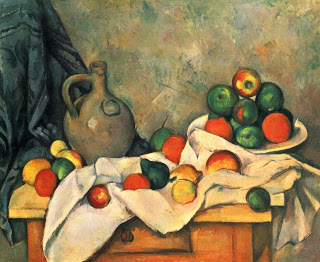Another vital lesson is that Cezanne looked and looked so hard at his subject - to find its "truth". He was frantically absorbing all he could about what he was seeing, trying to understand it, trying to grapple with it so that he could mutate it onto his canvas. "Cezanne at his easel, painting, looking at the countryside: he was truly alone in the world, ardent, focused, alert, respectful," as Renoir wrote. Every artist working from life needs to scrutinise the subject as carefully and attentively as possible - then, and only then, can one really hope to transmute it and interpret it according to oneself.
A lesson which resonates with me is Cezanne's passion for trees - pine trees and olive trees in particular. He painted them again and again, depicting them as one would depict a close friend, loved and carefully studied. They were noble examples of Nature, which resonated so deeply with Cezanne. As Ravaisou is quoted as saying in Cezanne a Life, "he was a sensualist in art. He loved nature with a passion, perhaps to the exclusion of all else; he painted in order to prolong within himself the joy of living among the trees." We can all learn from his paintings of the Large Pine and other tree paintings.




